West central Michigan vegetable update – July 22, 2020
Foliar diseases have seemed fairly quiet to date, but the recent warm overnights and high dewpoints could accelerate them, so don’t get caught off guard!

Weather
A cold front will pass through today, July 22, bringing a chance of scattered, 0.25 inches of rainfall. High pressure will move in Thursday, which may set off an isolated shower; most of the state will remain dry through Friday. There will be daily chances for scattered showers this weekend. A stronger weather system may move through next Monday and Tuesday, which could bring more widespread rain. Precipitation totals of 0.25-0.5 inches are forecast for the next seven days.
Highs will be in the upper 60s, low 70s to around 80 in the south today. Temperatures will warm again starting Friday, with highs in the low 90s and dewpoints in the 70s Sunday through early next week.
The medium range forecast calls for warmer than normal temperatures with near to above normal precipitation for July 27-Aug. 4. The outlooks for August and August-October call for warmer than normal weather.
Crop updates
Asparagus growers may see an uptick in purple spot symptoms over the coming weeks. Michigan State University Extension specialist Mary Hausbeck mentioned this is the type of growing season where it’s easy to be caught off guard. While it’s been dry, this past weekend and then again this weekend will see high overnight temperatures and dewpoints. TomCast sensors in Crystal Valley and Elbridge recorded 8-9 Disease Severity Values (DSVs) for July 14-20. Both sensors were launched on July 8, and at both locations a total of 15 DSVs had accumulated as of Monday.
Japanese beetles have been causing issues in at least isolated fields. Carbaryl, acetamiprid and permethrin all have activity against this pest. Note, in small fruits, permethrin is short lived, so carbaryl (e.g., Sevin XLR Plus) or acetamiprid might be products to consider.
Carrot growers should also keep up on fungicide covers even though it has been dry. A total of 22 DSVs accumulated between July 6-20 at one carrot site I am monitoring. For this field, a fungicide cover would have been warranted Monday if nothing had been applied since July 9. Aster yellows infectivity was 0% for a Mason County sample collected Monday. Symptoms of aster yellows were visible on scattered carrots at one location; symptoms included leaf bronzing, distorted new growth and hairy roots (Photo 1). These symptoms are developing from earlier infection.
Celery growers may want to be on the lookout for mites on field edges. Mite damage was detected in celeriac in at least one location on scattered plants. Agri-Mek (seven-day preharvest interval) and Oberon (seven-day preharvest interval) are labeled.
Cucurbit downy mildew has now been confirmed in eight counties, with three new detections Monday. Overcast weather with high dewpoints is favorable to spread. Hausbeck recommends rotating Orondis Opti, Ranman and Zampro. Chlorothalonil should be tank-mixed with both Ranman and Zampro, it is pre-mixed with Orondis Opti. A seven-day spray interval with good coverage will be important. Your one-stop shop for all things downy mildew is here.
Phytophthora capsici was causing plant death in problem fields in Oceana County, despite the dry weather (Photo 2). Though it is not an easy pill to swallow, it will be important to disc under affected areas plus a firewall of healthy-looking plants. Then, focus on protecting developing fruit in asymptomatic areas. Trying to protect areas where plants are dying is unfortunately not effective. Protecting fruit for the first 21 days after fruit set is important for hard squash varieties with age-related tolerance. These include squash such as acorn and butternut, as well as processing varieties like Dickinson and Buckskin.

Remember that there are not any products that are able to move systemically from leaves to fruit, products must contact the fruit. It is also tempting to only apply these ahead of rains. While it is definitely a good idea to tighten intervals ahead of a rain, product needs to be applied on a regular interval to be effective. Given the cost of these fungicides, it is important to give them a shot at working if you want to invest in them. Grower experience has shown that eliminating problem areas with the disc and protecting healthier areas works; having most of a crop is better than having no crop!
Growers have initiated their powdery mildew program in Ottawa County locations over the past week.
Virus symptoms including mottled leaves and leaf distortion were visible at one location I visited (Photo 3). Colleagues in southwest Michigan also noted virus symptoms. Besides variety choice, there is unfortunately nothing that can be done to prevent these aphid-borne diseases, as aphids infect plants quickly, before insecticide can kill them.
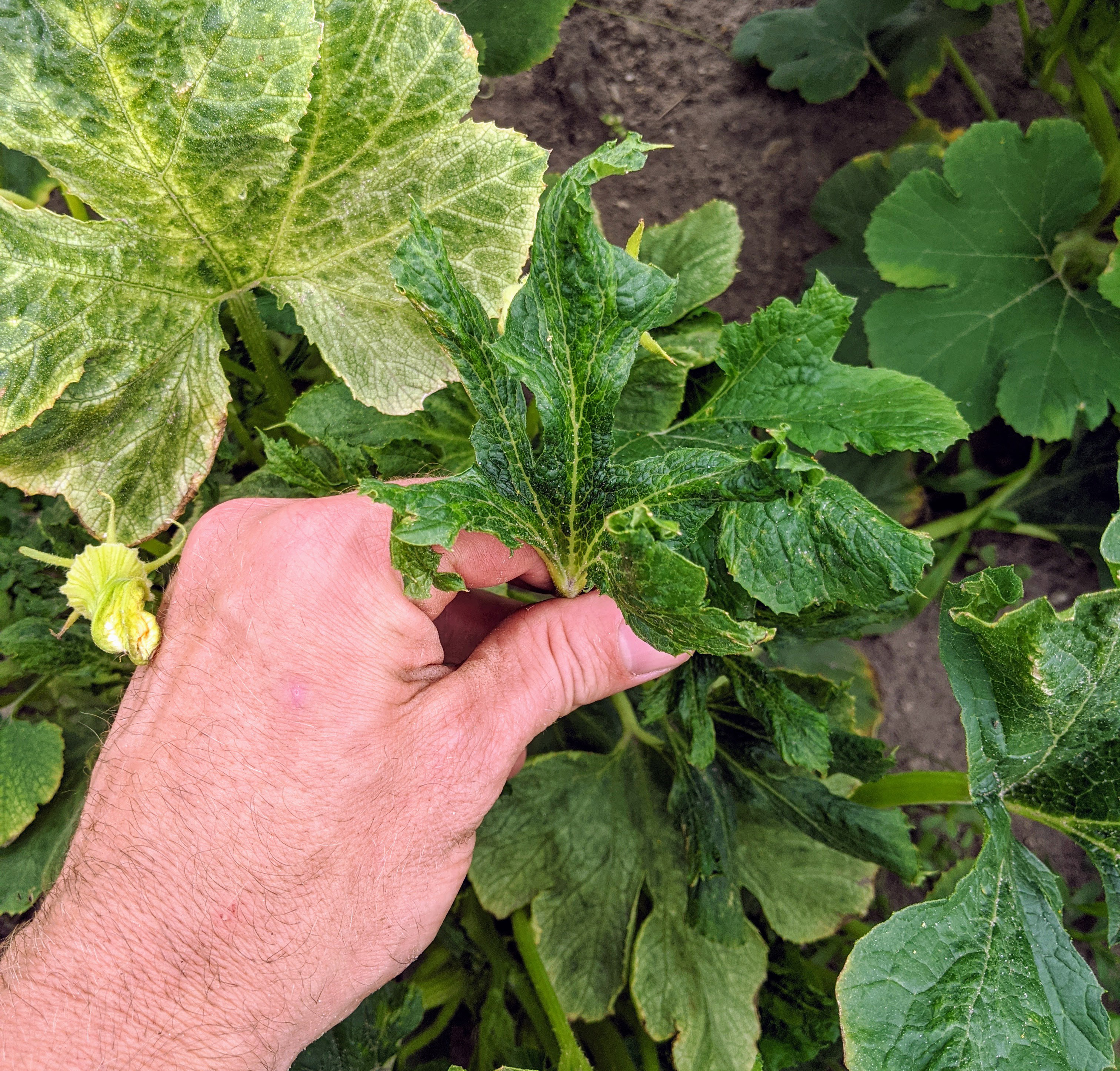
Onion growers should be aware that our recent weather has been ideal for Stemphylium. After a very dry summer, we have seen some high overnight temperatures along with high dewpoints (Photo 4). All this means that it will be important to stay on top of fungicide applications to keep onions healthy to the finish line. Luna Tranquility or Miravis Prime would be important to use now if you have not already and can be alternated with Bravo and then Tilt plus mancozeb.
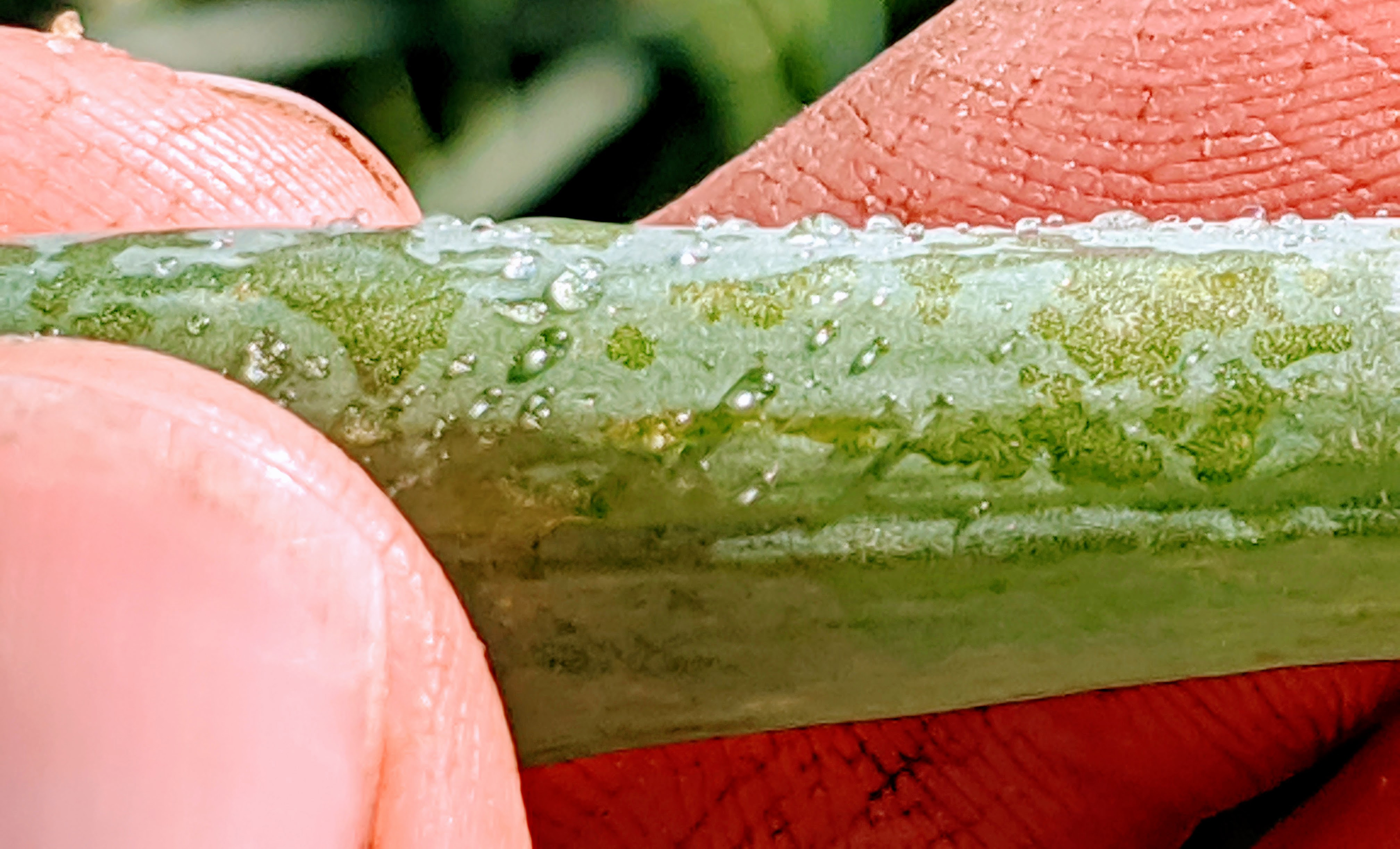
For peppers, potatoes and tomatoes, the first apothecia of white mold were recently detected in irrigated potatoes. This is a little later than is normal. Broad mites were causing injury in one pepper planting last week (Photo 5). Symptoms included distortion of new growth and russeting of the fruits. These mites do not produce visible webbing and hide out under the pepper caps. They are tiny and really hard to see even with a hand lens, as they look like sand grains (but they move!). Oberon (one-day preharvest interval), Portal (one-day preharvest interval), Movento (one-day preharvest interval) and Agri-Mek (seven-day preharvest interval) are labeled for peppers and carry broad mites on the label.
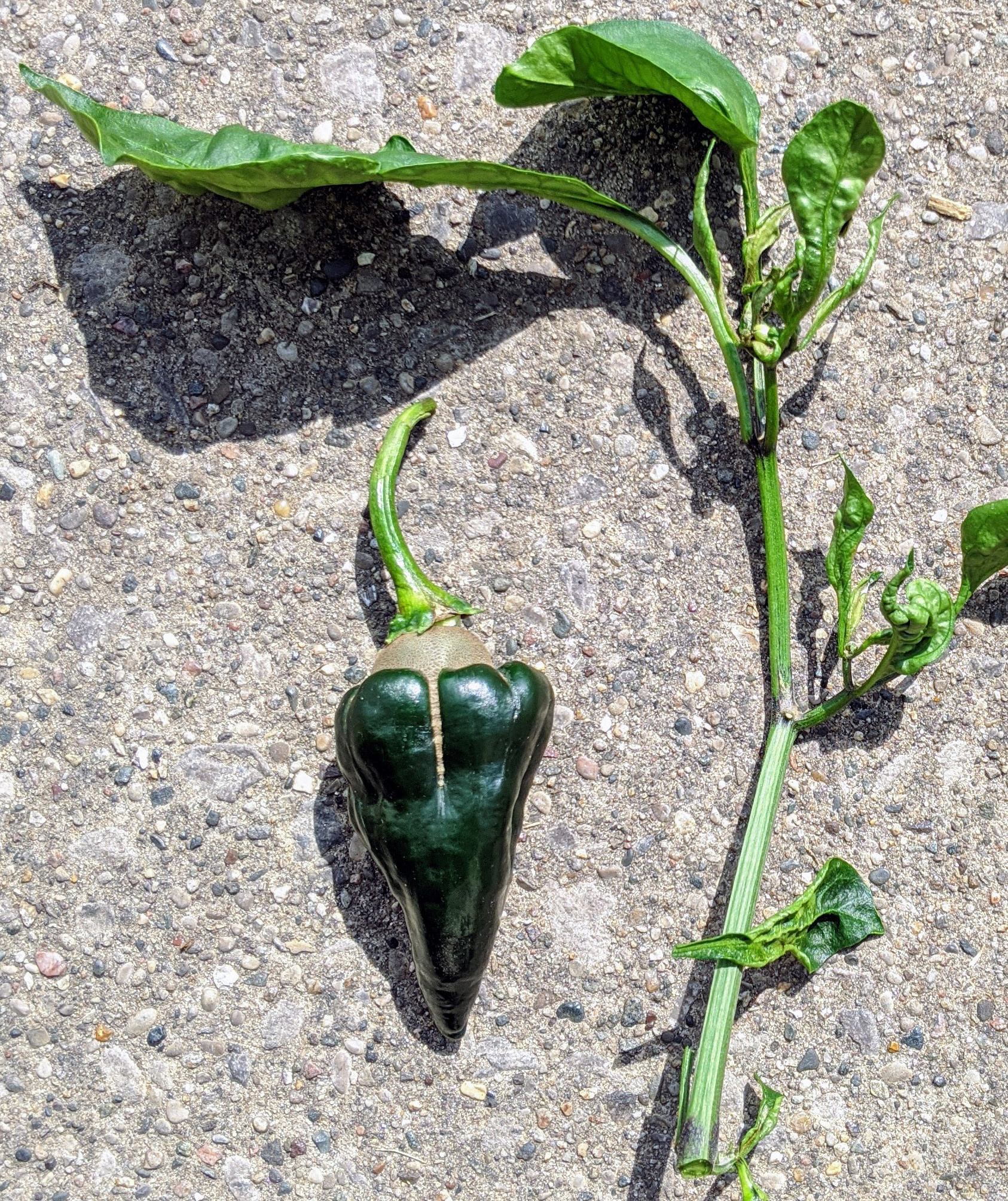
I caught a small number of European corn borer moths in an Ottawa County trap this week. It is time to start thinking about controlling this pest in peppers. Avaunt, Intrepid and Radiant are selective products that could be used for your first one to two applications. Remember, Radiant is the best thrips material, so do not use it now unless you need to. Organic growers can use Bt products for European corn borer, but these should be applied twice weekly. All products need to contact the fruit (and especially the caps) to be effective. These products will help conserve the beneficials that help keep thrips in check. Tomato hornworm has been reported by colleagues in southern Michigan. Bt products can be effective for mid-sized to small hornworms.
Sweet corn growers should be protecting silking corn against corn earworm. I captured roughly three moths per night at an Oceana and Ottawa County location this week. At this trap catch, a maximum five-day spray interval could be considered. Western bean cutworm numbers increased again this week. However, prompt earworm sprays will clean this pest up. I captured a small number of European corn borer in an Ottawa County trap this week, and degree days suggest the summer flight should be starting now or soon. A single pyrethroid application at tasseling should suffice if you are also initiating your earworm program at silking. This pest is mainly a problem where non-GMO corn is grown, or where sweet corn is grown without rotation.
Note, I have been getting a lot of “bycatch” in my traps this year, including gypsy moths. Remember that corn earworm moths are light tan with a dark spot on the wing (Photo 6). European corn borer are significantly smaller and have two wavy lines on the base of their wing (Photo 7). Gypsy moths are not a corn pest (thank goodness!), and males have big, bushy antenna (Photo 8).
Wondering about tar spot? I’d encourage you to listen in to tomorrow’s (July 23) Field Crops Virtual Breakfast on corn tar spot. You can also track where tar spot is in the state. It can affect sweet corn, though to date it has mostly been found in field corn.
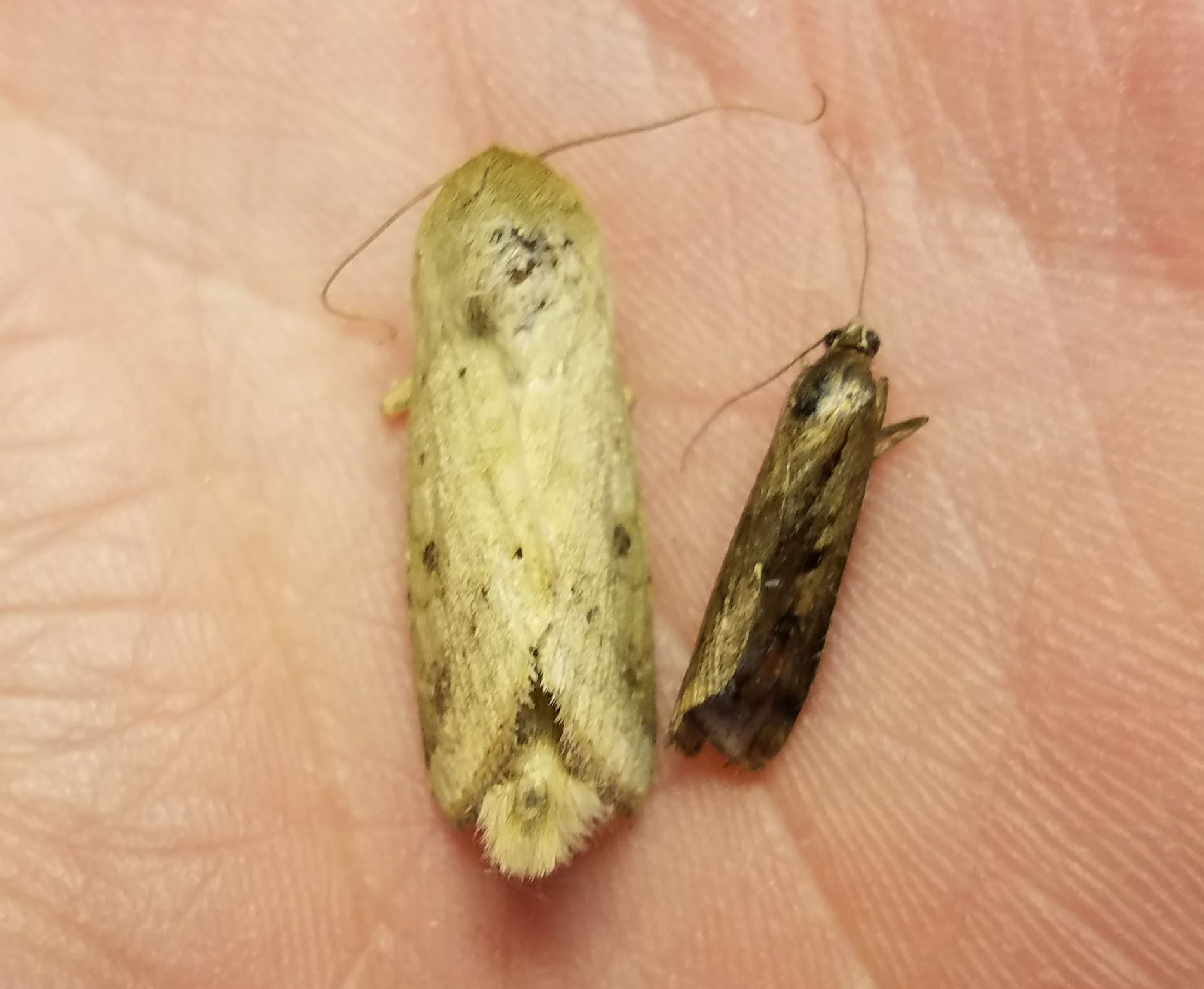

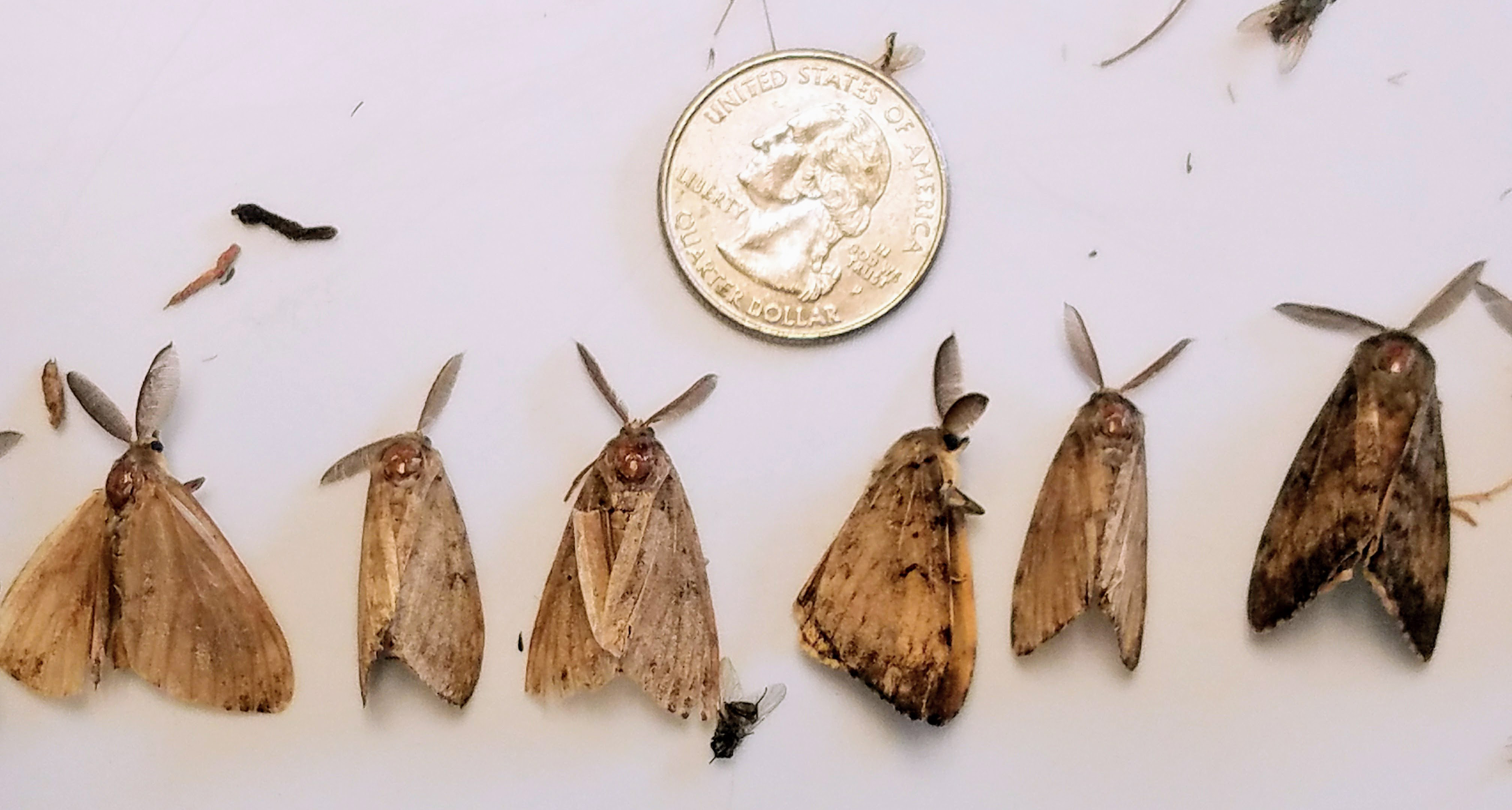



 Print
Print Email
Email

